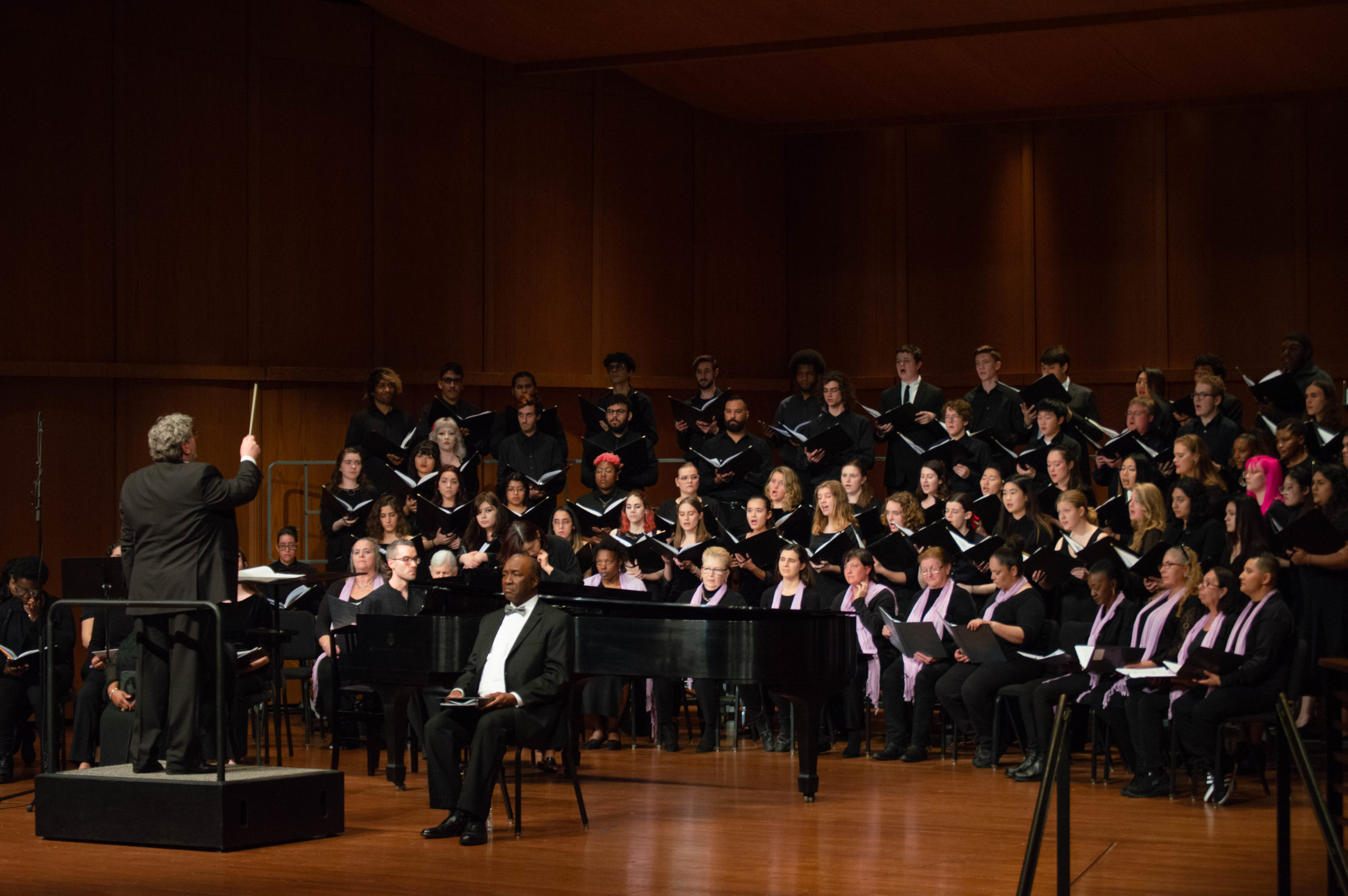“Choirs In the Time of Covid and Beyond,” by Charles W. Kamm
November 7, 2022
The choirs of the Joint Music Program of Claremont McKenna, Harvey Mudd, Pitzer and Scripps met the challenges of singing during the ongoing COVID pandemic in a variety of creative ways. Late in February 2020, the Claremont Concert Choir and Claremont Treble Singers were joined by three outside groups—women from Crossroads house, a transitional living community in Claremont, Chaffey College Chamber Choir, and a children’s choir from Holy Family Church in Glendale—to present a revival of “True Witness: A Civil Rights Cantata” by Jodi Goble. Little were we aware then just how possibly risky it was to have over 100 singers on the stage of Garrison Theater as COVID was about to hit the U.S. hard. We were fortunate not to have cases resulting from this performance.
Less than a month later, the Colleges had sent students home and classes were taught online. How do you teach choirs online!? The joy of choral singing is making music together, hearing other voices, making harmonies and counterpoint and engaging in an inherently social activity of creativity. The technology of Zoom and other platforms had so much latency that singing together was impossible online. So, I and the choral students became innovative over the next year plus. That spring (when we had been planning to perform Beethoven’s Mass in C Major in May) we pivoted to a variety of experiential online options, including working on sight singing, comparisons of different recordings of the same choral work, comparisons of different composers’ settings of the same text and even composing a short piece. Students were able to complete a semester of choral study in a variety of ways.
When it became clear that we were not returning to campus in fall 2020, the number of students enrolling in choir dropped precipitously, and we offered only one choir. We spent the semester online exploring the history of choral music from European origins in the middle ages to worldwide choral music of the present, individually learning parts to some pieces along the way. In spring 2021, we focused on learning parts of pieces together, recording them individually and then creating “virtual choir” recordings where we electronically combined all the voices, complete with editing for rhythmic inaccuracies, balance issues and pitch correction. What a great lot of new technology I learned that year!
By fall 2021, we had returned to campus and to in-person instruction. It was great to be able to come back together and sing again, but the conditions were restrictive, and numbers of singers were small—we continued to offer only a single choir that year. We sang masked, standing about six feet apart and could only sing in a room for 30 minutes before having to give it time to recycle the air. We rehearsed a great deal outdoors, even as the cold of winter approached. Yet we persevered in creating a short choral concert that we were, in the end, permitted to perform inside the spacious Garrison Theater, performers and audience all wearing masks. Spring semester 2022 saw more easing of restrictions, and by fall 2022, we were back to two choirs and growing numbers.
We are still singing masked, but we are singing together, making those harmonies ring that choral singers so love. Concerts this semester included the Fall Choral Concert on Sunday, Nov. 6, at 2 p.m. in Garrison Theater at Scripps. The Christmas portion of Handel’s Messiah will be performed on Sunday, Dec. 4, at 4 p.m. in the Claremont United Church of Christ, and there will be a Friday Noon holiday concert on Dec. 9 at 12:15 p.m. in Balch Auditorium at Scripps.
What does the future hold for choral singing? Our experience suggests that, despite some risks of transmission of airborne viruses when singing together, the benefits to mental, emotional and even physical health outweigh the risks. We will take precautions as long as necessary, but eventually—as after the 1919 “Spanish” flu—we will be able to return to singing without masks and with little worry of the transmission of serious illness.
For more information about the choirs or the Joint Music Program, and for some sound recordings from choral concerts, visit the Joint Music Program website.
Charles W. Kamm
Charles W. Kamm is the director of the Concert Choir and the Chamber Choir of the Joint Music Program of Claremont McKenna, Harvey Mudd, Pitzer and Scripps Colleges. He is associate professor in the music faculty at Scripps College, where he teaches music history, music appreciation and choral conducting.